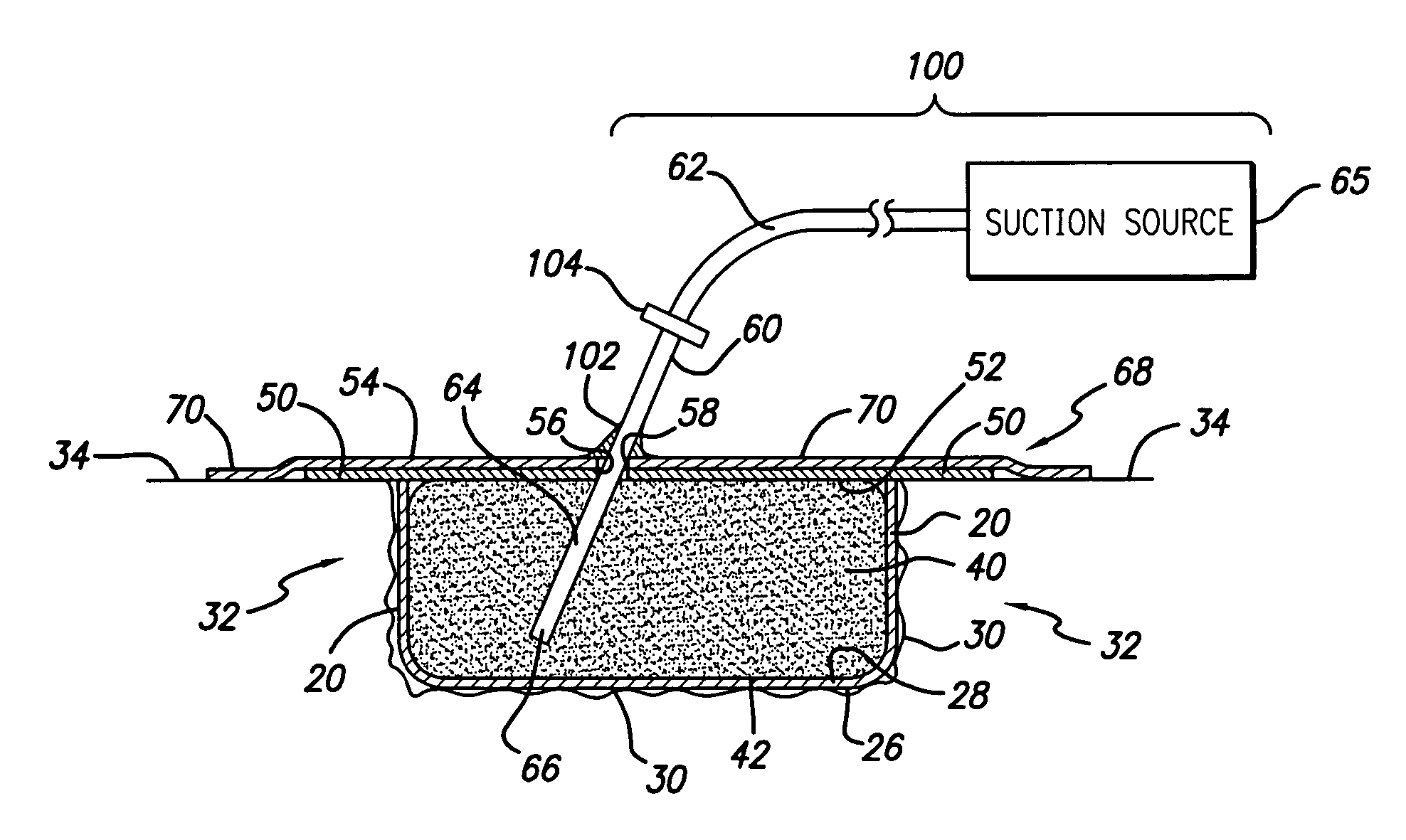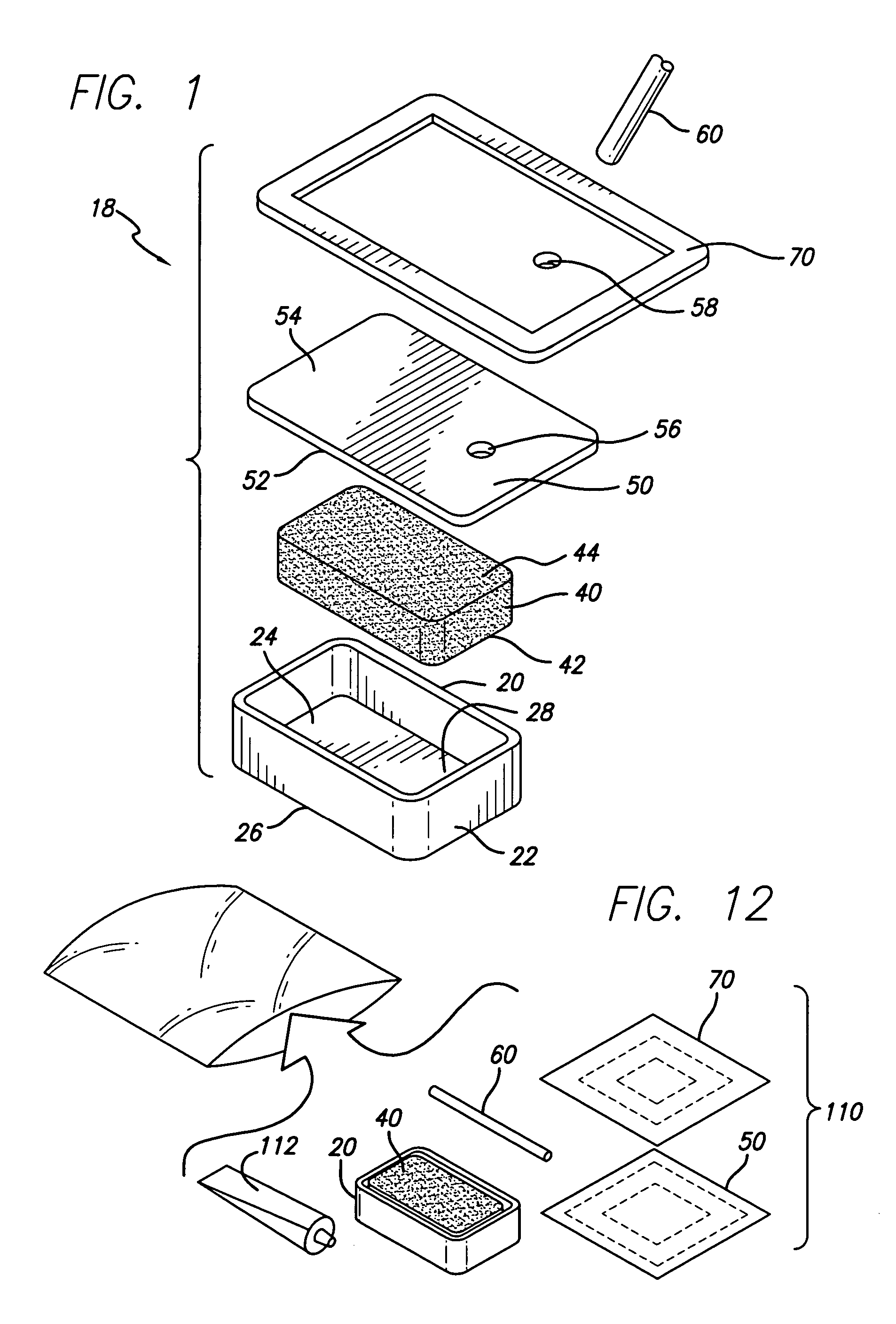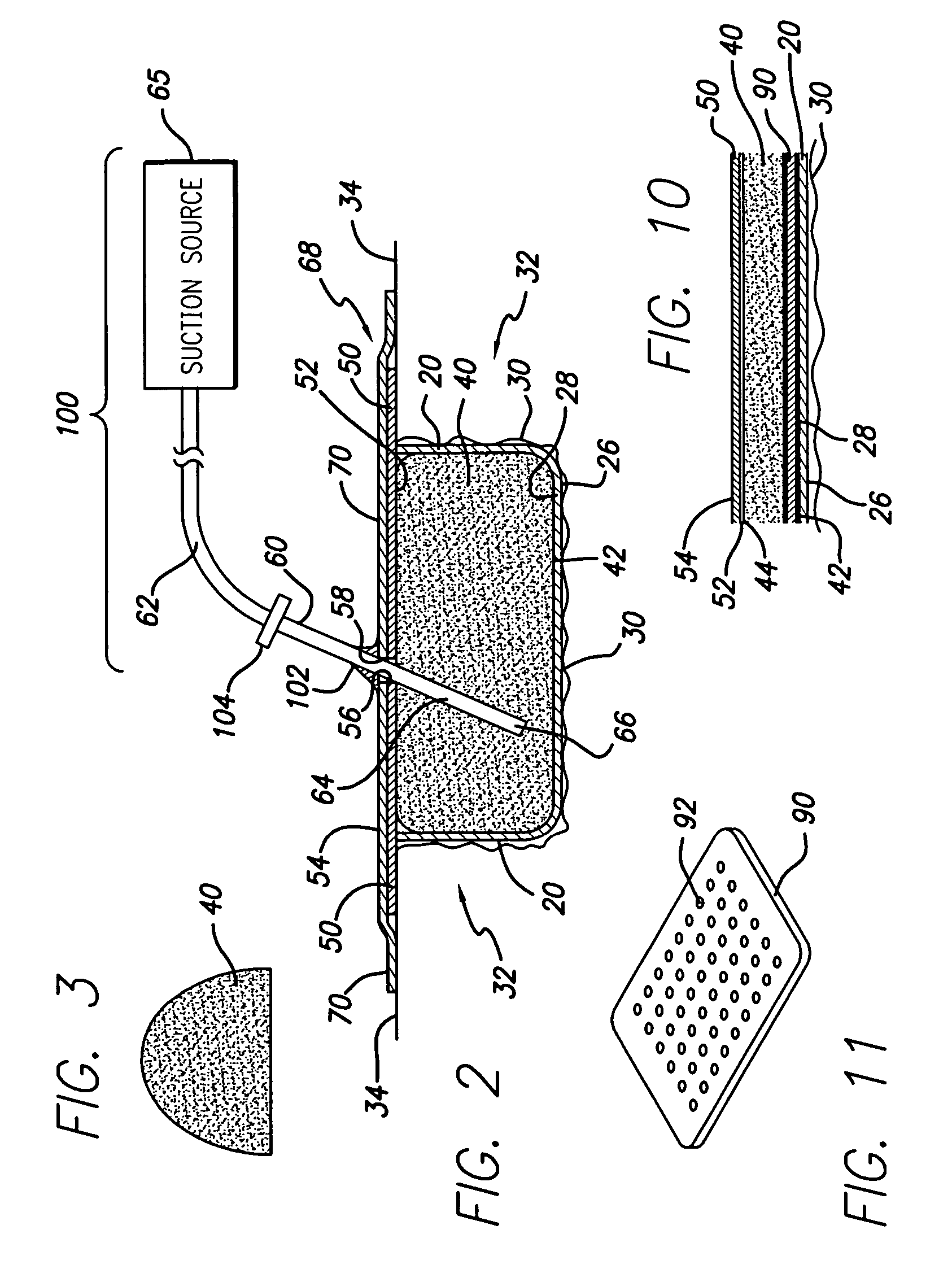Furthermore,
wound healing is facilitated by removing excess air, fluid, and debris, the presence of which usually inhibits the normal healing process.
Although the preferable method of treating a clean wound is by primary closure with sutures or staples, sometimes closure by such techniques is impossible.
For example, sometimes the amount of tissue loss in a wound does not allow approximation of the wound edges without undue mechanical stress.
Chronic wounds, such as pressure wounds may take months or years to heal without primary closure.
Long healing times often reduce patient mobility, thereby resulting in additional medical complications and further exacerbating the patient's underlying medical condition.
Frequent wound dressing changes are needed to remove the fluids produced by the wound, many of which inhibit
wound healing.
If the
skin and superficial part of a wound close before the deeper
layers have healed, pressure will again build up in the wound resulting in delayed wound healing or an infection.
Otherwise the canisters fully expand and the suction effect is lost.
Negative pressures of up to 150 mm Hg have generally found to be beneficial, while negative pressures exceeding 400 mm Hg are generally detrimental and inhibit
blood flow.
Because applying this type of negative pressure dressing is technically challenging, the staff must be well educated and experienced.
Good results are highly dependent on the clinician's technique, as applying presently available negative pressure dressing materials is complicated and awkward.
If the packing does not properly conform to the wound or negative pressure is not maintained under the film dressing, the
system fails, according to Chariker.
Furthermore, the Chariker system carries risks of severe complications when used with very large wounds.
It is possible to miss seeing and feeling a gauze pad deep in a wound and thus
neglect to remove all of the old gauze when doing dressing changes.
Unintentionally leaving a gauze pad deep in a wound for a prolonged period of time could be disastrous with a
resultant severe
foreign body reaction and almost certain infection.
Gauze pads are not uniformly porous; therefore they will not distribute the suction forces from the Jackson Pratt drain in a uniform manner.
A uniform negative pressure may be very difficult to achieve throughout the wound cavity, and there may not be negative pressures at all in some corners and recesses of the wound.
The gauze pad fibers may enter the perforations in the Jackson Pratt drain resulting in
occlusion of sections of the drain.
The Jackson Pratt drain central channel may also get clogged with blood clot or debris, since the gauze may not provide a consistent barrier to entry of these materials into the drain.
When the gauze is removed, there may be pain and bleeding.
It is difficult to tell how much
saline soaked gauze to place in a wound.
Once the would, drain, and gauze pad are covered with
transparent dressing and suction applied, there may be too little gauze to properly fill the wound.
Alternatively, too much gauze will mechanically force the wound edges open and slow wound healing.
It is very difficult to estimate the proper amount of wet gauze at a
dressing change.
These errors can occur frequently when an inexperienced clinician applies the vacuum dressing.
Having to redo a dressing is not only expensive in terms of time and supplies, but is also a very inefficient use of a limited
nursing staff.
However, none of the materials disclosed by Argenta are bioabsorbable materials.
The
disadvantage of the Lina pad is that although it is biocompatible, it is not bioabsorbable.
This is a concern because if the Lina pad is
cut to a smaller size, small pieces or dust-like particles of the pad material will inevitably adhere to the pad or possibly fall into the wound during the
cutting process.
Leaving behind in a wound one piece of non-absorbable pad during dressing changes is an inherent risk of using non-absorbable materials and could be disastrous.
A piece of non-absorbable pad inadvertently left in a wound for weeks will result in the wound not healing and probably becoming infected.
This is
time consuming and not fool proof as often more than one clinician is doing the dressing changes.
In addition, it is cumbersome for a clinician to be required to determine which side of the pad has the small pores, and therefore is the wound side, and which part of the pad has the larger pores that cannot be placed against the wound without risking ingrowth of
granulation tissue.
It is also impractical to
cut such a pad into small pieces to conform to the wound bed while at the same time being mindful of not placing the part of a pad with larger pores against the wound.
These dressings have all of the disadvantages of non-bioabsorbable dressings as described above.
Another
disadvantage of these dressing kits is that it is incumbent on the clinician to
cut the pad to the correct shape and profile, place the tubing into the pad, and cut the film to the correct size to seal the pad and wound from the
atmosphere.
The job is tedious and requires a great deal of
cutting and customization of the pad and film.
Blood is an excellent culture medium and bleeding due to dressing removal increases the
risk of infection and delays the healing process.
 Login to View More
Login to View More  Login to View More
Login to View More 


